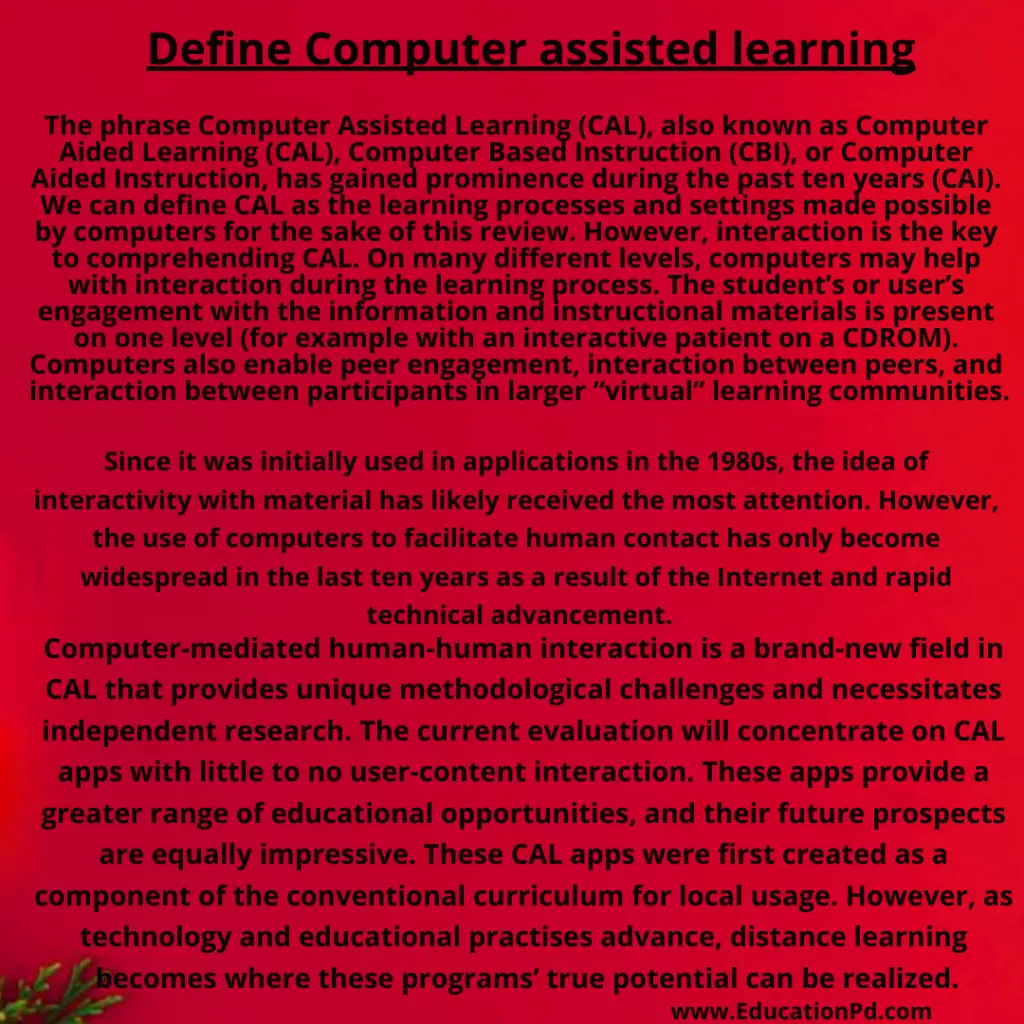Back to: Educational Technology in Education B.ed Notes, M.A Notes, IGNOU Notes
Define Computer assisted learning
The phrase Computer Assisted Learning (CAL), also known as Computer Aided Learning (CAL), Computer Based Instruction (CBI), or Computer Aided Instruction, has gained prominence during the past ten years (CAI). We can define CAL as the learning processes and settings made possible by computers for the sake of this review. However, interaction is the key to comprehending CAL. On many different levels, computers may help with interaction during the learning process. The student’s or user’s engagement with the information and instructional materials is present on one level (for example with an interactive patient on a CDROM). Computers also enable peer engagement, interaction between peers, and interaction between participants in larger “virtual” learning communities.
Since it was initially used in applications in the 1980s, the idea of interactivity with material has likely received the most attention. However, the use of computers to facilitate human contact has only become widespread in the last ten years as a result of the Internet and rapid technical advancement.
Computer-mediated human-human interaction is a brand-new field in CAL that provides unique methodological challenges and necessitates independent research. The current evaluation will concentrate on CAL apps with little to no user-content interaction. These apps provide a greater range of educational opportunities, and their future prospects are equally impressive. These CAL apps were first created as a component of the conventional curriculum for local usage. However, as technology and educational practises advance, distance learning becomes where these programs’ true potential can be realized.
It is significant to note that, despite the fact that interactive CAL programmes can be accessible from many locations, they are all guided by the same instructional principals. As an illustration, a “interactive patient” may be accessible through a CDROM at the university’s ICT lab to augment the local curriculum, and the same application can be made available online as a component of a distance learning course.
As long as the interaction between the user and the material persists, the learning principles and methodological consequences are the same in both scenarios. Therefore, research into this form of local application is directly related to the use of CAL in remote learning, where the medium’s future unquestionably rests.
The current study seeks to provide an overview of the current state of CAL applications in health education. The evaluation focuses in particular on the educational value of CAL and its efficiency as compared to conventional instruction. Additionally, we want to look at how students, faculty, and professionals feel about CAL. Finally, the field’s foreseeable future trends and advancements will be discussed.
